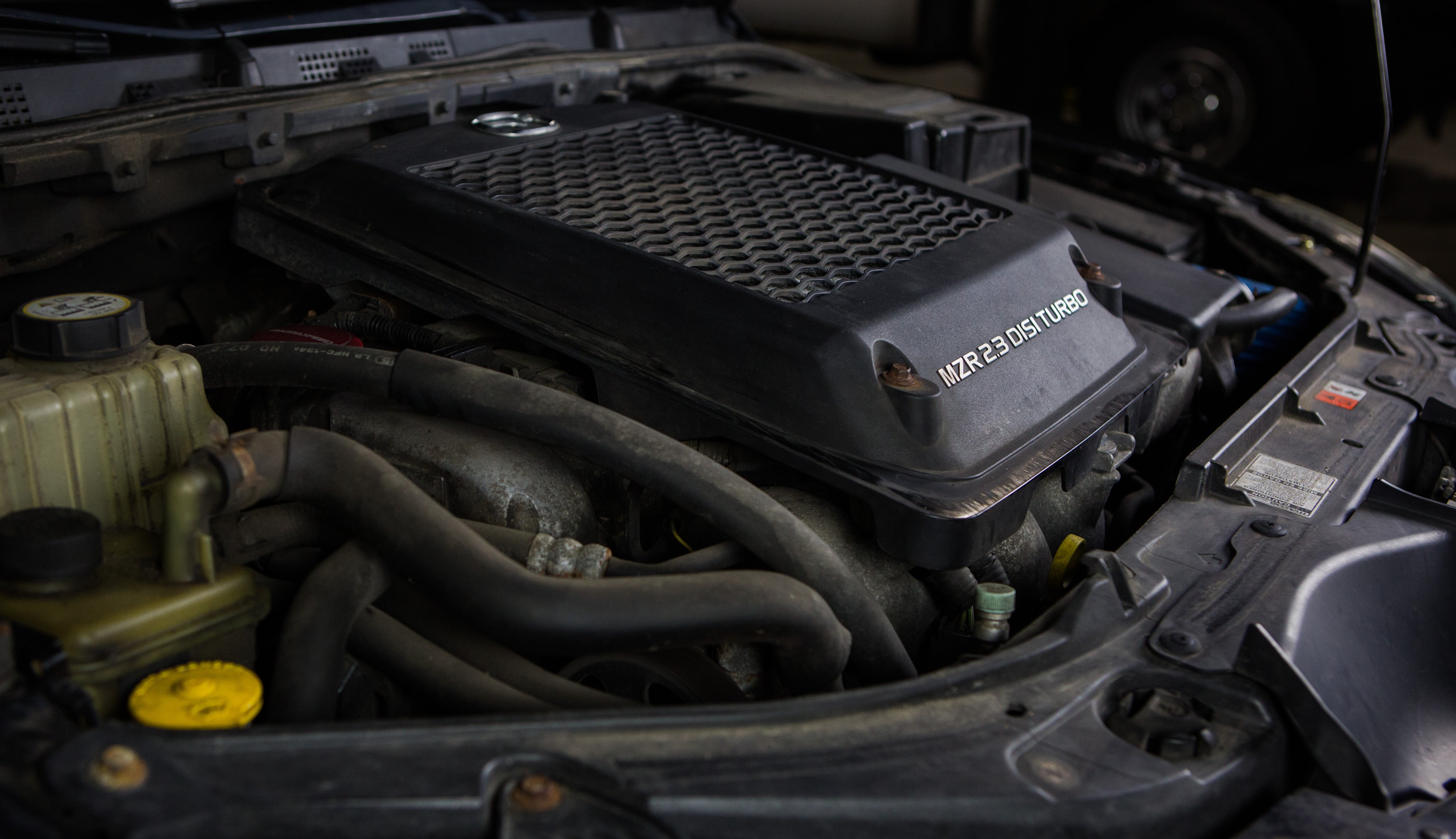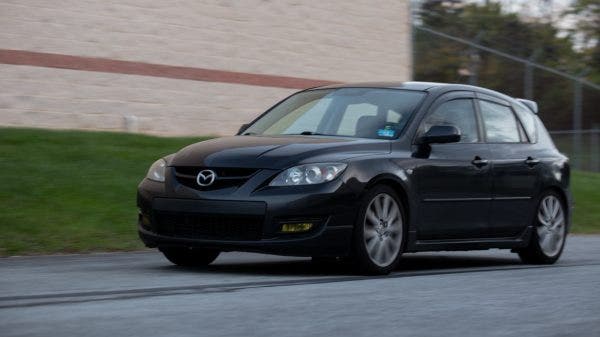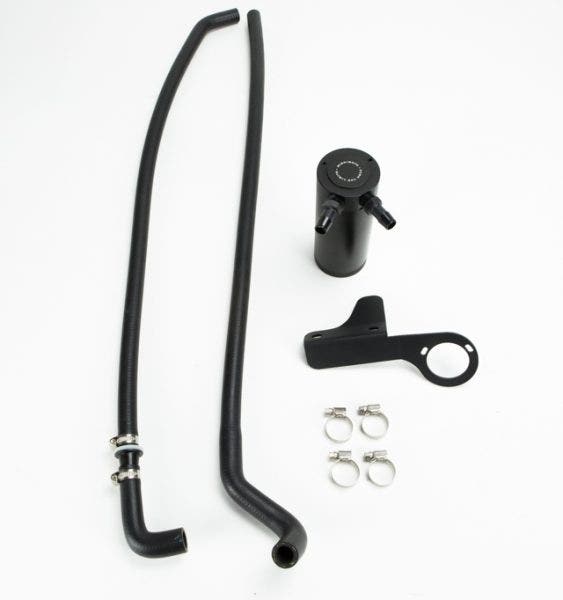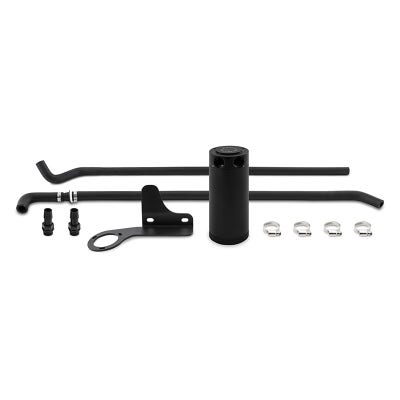
Hot-Hatch Renaissance - 2007-2013 Mazdaspeed 3 Direct Fit Catch Can R&D Part 2 - Blow-By Verified
It's been a long time since we saw the first iteration of Mazda's return to hot hatches, over a decade in fact. A lot has changed since then. The first difference you might notice is that the Mazdaspeed division is nowhere to be found, and instead, the MZR Turbo lives on as the Ford EcoBoost. For the MS3's that are still on the road racking up the miles, they might be seeing all sorts of replacement parts, but also a decade's worth of carbon buildup.

If you recall from our last installment, the Speed 3 challenged the seasoned hatchback veteran, VW, with their own version of the turbocharged, direct-injected 4-cylinder that boasts more power and equipment than just about all its competitors. However, if you are knowledgeable on the first wave of this combination of engine characteristics, you'll know that every one of these, the 2.3L MZR Turbo included, were plagued with carbon buildup and blow-by issues. Mazda shrewdly incorporated their PCV system to route those contaminated crank case gasses directly into the intake manifold, sparing the intercooler from oil residue into the air passageways. However, this means that the intake valves are now being directly blasted with all that oil and other combustion gasses.

This is an example of what can happen to your intake valves over time if left unprotected. This was from an Mk5 GTI, one of the Mazdaspeed's main competitors at the time and known for its issues with blow-by.
We might not have been able to get a peek at the state of our loaner MS3's intake valves, but we know the story will be the same, if not worse, judging from the amount of blow-by collected during our preliminary testing. To put it simply, there was a lot.
We ran two separate tests, one in colder weather and a second more recently over the summer. In our hot-weather test, we collected a more run-of-the-mill 18 ml over 1000 miles. Considering that would almost half-fill one of our standard compact catch cans, we needed to explore options for a larger can. Otherwise, you would have to drain this system almost twice a month.

At first glance, this might not seem like much, but if you consider that at least this much oil is peppering your top-end components every 1000 miles it seems like much more.
Our cold-weather test produced much more worrisome results, and further locked down the need for a larger can. In colder weather, all the metal and rubber components contract. Unfortunately, short of throwing a block heater on your MS3, there's no way to prevent this. The nasty side effect is that until your MZR warms up, there are much more significant gaps in the block's components, leaving room for more combustion gasses to slip past your piston rings, and more contaminated crank-pressure re-routing through the intake manifold. There is also the issue of cold air in the lines condensing as the car warms up and mixing water with the oil and fuel droplets. All of these combined lead us to collecting upwards of 100 ml during our first round of testing.

Our cold-weather test didn't consist solely of engine oil, but was mixed with fuel droplets and condensed air in the PCV lines to create a larger volume of collected blow-by.
After seeing this amount of murky liquid pour out of our catch can, there was no reason not to go with our taller, 7.5 oz catch can to compensate for the large amount of blow-by. The only issue that remained was where to mount this extra-large can.

With the results of our cold-weather test we saw it as a no-brainer to utilize our 7.5 oz catch can to keep you from having to empty it once a week in the winter.
Looking back at our review of the stock system, open space under the hood was a hot commodity. While there are a few options to mount one of our compact cans, the fact still remains that the service interval would be short. There is also the case of running the lines to and from the can.

One might think that with the addition of a turbo and an intercooler to the 2.3L MZR, that there would be plenty of room under the hood for just about anything you would want to add. However, after popping the hood of our loaner Gen1, the story is quite the opposite. Even utilizing a short-ram intake without a box, the bay is still cramped. There's barely space for one of our compact catch can systems let alone the clearance for our taller 7.5 oz. can. That story all changed once our engineer decided to put the MS3 up on the lift.

Our engineer, Jason, works on installing our prototype catch can kit on our loaner Gen1 Speed3.
With the car in the air and the splash shield removed, it became clear where the ideal mounting location would be. While the engine bay is cramped, the underside of the Speed3 offers ample clearance for our larger catch can, and not to mention much better accessibility for draining the collected blow-by. This underside mounting location also reduces the amount of hosing you'll need to tap into the stock PCV system, and generally simplifies the installation.

Routing the hoses from the top of the engine bay would have been tricky, and lead to some extra-long hoses. However, by mounting the can under the car, the hoses are still lengthy, but much more manageable.

Our larger can fits snugly against the frame, and fits perfectly with the undertray, keeping it out of sight but still easily accessible.
With our test kit mounted, our loaner Speed3 is now getting the protection it needs to ward off any additional carbon buildup on the intake valves. For now, we have been able to confirm that our kit is a direct fit on the Gen1 MS3, but the Gen2 fitment is shortly behind. Stay tuned as we update our list of fitments for this kit, and in the meantime, our Gen1 readers can take advantage of special pricing for their catch can in presale.

2007-2009 Mazdaspeed 3 Direct Fit Catch Can PreSale
Thanks for Reading!
-Nick









